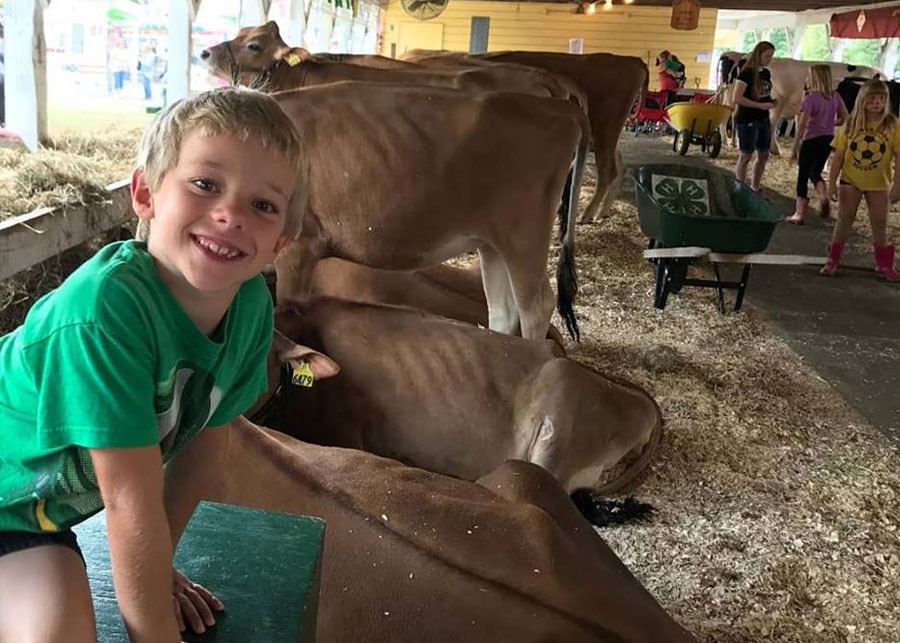














































Jersey cows, the breed milked at Dutch Hollow Farm, are known for their rich milk, which is higher in protein than the milk produced by Holstein cows.
Jersey cows are also known for their curiosity and friendly demeanor. If you don't watch out, they could just lick you to death!
Baby calves are always a hit with everyone because they are just so cute!
Calves are raised in individual pens in a barn until they are weaned, then moved to group pens.
In these pens, they will be cared for individually, fed milk twice a day and introduced to a grain mix and water. Each calf has an eartag that she will wear for life. The identification allows dairy farmers to better care for their animals, documenting parentage, health, milk yield and more.
These heifers are about a year old.
Cows are milked in a parlor. . .
. . .with machines like these.
They spend the rest of their time in a freestall barn sleeping on mattresses with sawdust bedding.
Cow comfort and care is paramount at Dutch Hollow Farm, especially for mothers-to-be like these, who are within a week of having a calf.
They are carefully watched during this time to ensure a healthy baby calf is born and receives colostrum within hours of birth.
Baby calves born in the winter require special care. They are placed under a heating lamp shortly after birth and wear blankets to keep warm.
This calf was born just minutes ago. . .
. . .with a face only a mother could love.
But, after a bath from her mother's tongue, a good meal and nap, she'll be ready to face the world.
Some of the equipment at Dutch Hollow Farm on display for a farm event.
Feed is now commonly stored in "silos" that are on the ground rather than upright.
Alfalfa is fed to the cows as either hay or haylage. Hay is produced by cutting the alfalfa . . .
. . .and raking it into windrows. The alfalfa is then dried and baled.
Alfalfa is also made into haylage, which is a moist form of alfalfa. It is chopped on the field and fermented in a silo.
As with human diet, the quality of the cow's diet is paramount for health. Forages like hay, haylage and corn silage form a bulk of the dairy cow's diet.
Soybeans are also raised and harvested at Dutch Hollow Farm. The typical order of harvest for farmers in New York is hay, soybeans and corn. If they are lucky, farmers may get four harvests of hay during a single season. Each harvest is called a "cutting."
Corn stalks and ears are harvested for corn silage. . .
. . .and then stored in large silos on the ground. The corn silage is covered with plastic that is then weighted down with tires.
Corn is also harvested when is it mature as a source of energy in the cow's diet. The stalks are used as bedding.
Because timing is critical when harvesting crops and because weather changes, farmers often spend long days harvesting, even into the wee hours of the morning.
The long hours are made up for with beautiful sunrises and sunsets, views typically seen only in rural America.
Rain not only helps to grow crops, but also brings rainbows.
Manure from the animals is transferred from the barn to a spreader, where it will be applied to the fields. Manure adds organic material and nutrients to the soil and reduces the need for purchased fertilizers.
For kids who grow up on farms, spending time with their animals and friends at the fair makes up for the hard work and responsibilities that come from operating a farm.
One wonders: who is more tired from all the hard work and excitement at the fair....kids or cows?



































